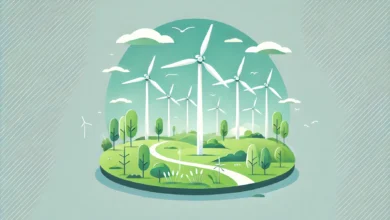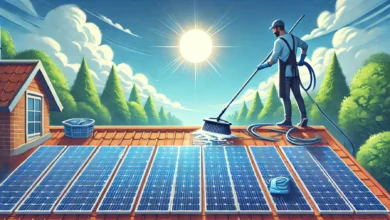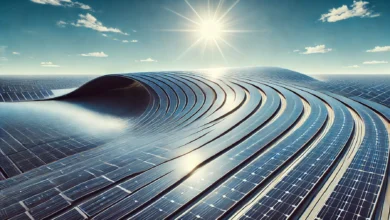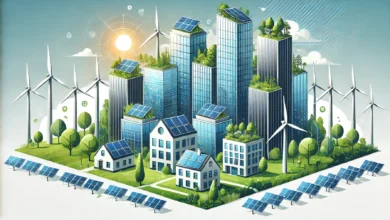What is Wind and How is it Caused?
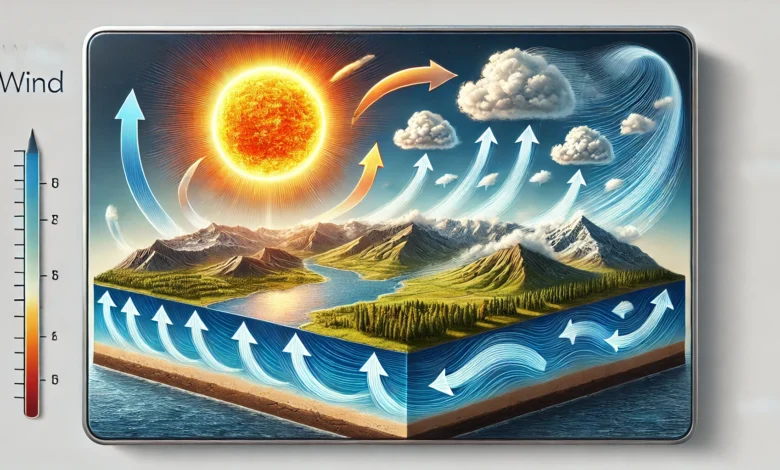
Being educated on what is wind and what causes it increases our appreciation for one of nature’s greatest phenomena. Wind is something we feel everyday without giving a second thought to what causes it. Most of us do not ever think twice about where wind comes from; it is so natural to us. But behind every breeze and gust are numerous processes taking place in the atmosphere. Let’s learn how wind is formed and the role it plays.
Contents
What is Wind?
Wind is more simply put, air in motion. Wind moves horizontally across the surface of the Earth and is primarily caused by pressure differences in the atmosphere which are themselves caused by the uneven heating of the Earth’s surface by the sun. When the sun heats the surface of the Earth, the heat is not distributed evenly. Oceans, mountains, forests, and deserts all absorb and release heat at different rates. This causes the temperature of air to vary from region to region, resulting in pressure differences. And cooler air replaces warmer air, resulting in wind.
How is Wind Created?
1. Uneven heating of the Earth’s surface
The sun does not heat the Earth uniformly or evenly. Oceans, mountains, forests, and deserts all take up and give off heat at their ability to. Because of this, air temperature will vary from place to place on Earth, resulting in pressure differences. And as warm air goes up, cooler air comes rushing in; thus creating wind.
2. Differences in Air Pressure
When air is heated it expands, and with that, its density decreases, and so it rises. Cooler air, which is denser, moves in to replace the rising warm air and therefore, they create air currents. Wind speed and direction depend on how large or pronounced the difference is between high-pressure and low-pressure areas.
3. The rotation of the Earth (Coriolis effect)
If the Earth were not rotating, all winds would blow in a straight line from high to low pressure. However, because the Earth IS rotating, it turns moving air to the right in the northern hemisphere and to the left in the southern hemisphere. This is the Coriolis effect, and it is this effect that causes our global wind patterns to spin, as opposed to straight-line winds.
Things That Contribute To Wind Patterns
1. Global Wind Belts
The Earth has large wind belts, called trade winds, prevailing westerlies and polar easterlies — caused by the three atmospheric circulation cells (Hadley, Ferrel and Polar cells) that circulate to help distribute heat around the globe.
2. Local Physical Features
Mountains, valleys and large bodies of water can create their own local patterns of wind. Coastal areas provide a perfect example; areas experience daytime sea breezes and nighttime land breezes due to the land and the water exchanging temperatures that consequently alter wind direction.
3. Seasonal Effects
Monsoon winds are a fantastic example of how winds can be seasonal. In areas like South Asia, the transitional seasons bring strong east-west winds that create dramatic wet and dry seasons that affect the landscape and daily activities.
Types of Winds
1. Trade Winds
The trade winds occur in the tropics near the equator and blow east to west. The trade winds historically helped to cross oceans with sails when exploring during the Age of Exploration.
2. Westerlies
The westerlies occur between 30 and 60 degrees latitude as they blow from the west to east and determine a large part of the weather in the bordering states of the United States and Europe.
3. Polar Easterlies
The polar easterlies occur near the polar regions with extremely cold, dense air that sinks and laterally diffuses outward. They move from east to west and are generally cold and dry in nature.
4. Local Winds
Local winds include sea breezes, mountain breezes, and katabatic winds, which have been formed based on physical geographic/topographic features and their temperature differential.
How Wind is a Factor in Our Life
Wind is certainly more than just an atmospheric phenomenon—it also influences our existence. More importantly, wind energy has become an alternative energy source. The capability to harness wind energy with wind turbines has recently provided a means for people to utilize the power of the wind to produce electricity (As curiosity if you are wondering, you might want to also read – How Does Wind Energy Work?).
Wind affects agriculture, too, by carrying moisture and pollinating crops. Wind has played a role in aviation, shipping, and forecasting weather. Without wind, many climates would become stagnant with severe temperature differences.
Some Wind Facts
- The fastest wind ever measured on the surface of the earth (excluding tornadoes again) was over 250 mph, measured during a tropical cyclone.
- Dust storms have shaped landscapes like Monument Valley in the United States.
- Wind patterns helped ancient civilizations navigate the ocean and establish trade across oceans; generated some of the earliest written histories.
- Gansu Wind Farm (China) is currently the largest operating onshore wind farm, with a capacity of more than 8,000 megawatts and continues to grow.
Frequently Asked Wind Questions
How does temperature drive wind?
Temperature changes in an area create pressure gradients, and winds follow these gradients when air rises, and cooler air moves in.
Does the wind move faster at a higher altitude?
Yes. Higher altitudes have less friction with the land surfaces, allowing winds to blow faster and freer.
What is the Coriolis Effect?
The Coriolis Effect is simply the bending of moving air (and water) due to the rotation of the Earth. This creates the effect of a spiral movement of winds rather than a straight-line movement.
Why does it seem like the wind is more prevalent nearer to a coastal area?
Land and water heat up differently and create frequent pressure differences that generate breezes between the sea and land.
Can we predict wind accurately?
We can accurately predict winds in relatively short-term events—using the skills of modern meteorologists—but as we move further into time, there is often increasing error in predictions.
Understanding winds and their drivers can help us understand the natural rhythms of life that continue to shape our environment every day. Wind is created by sunlight, pressure gradients, and the rotation of the Earth. Winds give us natural science examples of invisible energy in motion, and as they cool us on summer afternoons to air out the 100 MW large wind farms around the world, they demonstrate the power of small forces of nature and make them significant in the impact of life as we know it.
